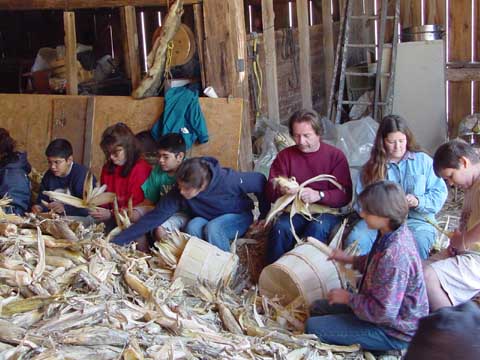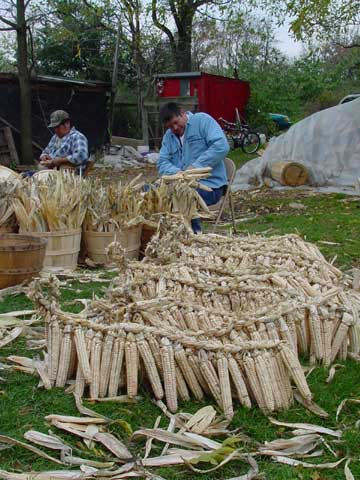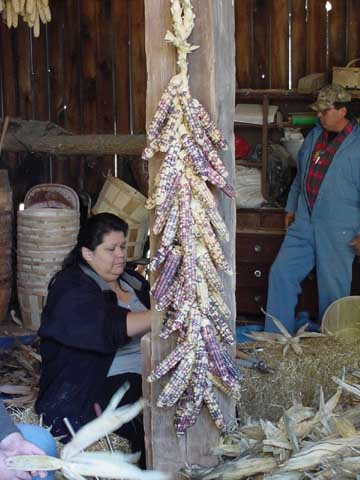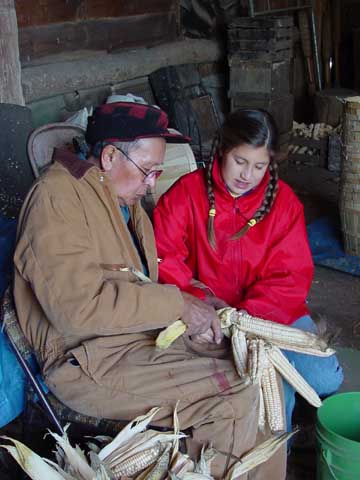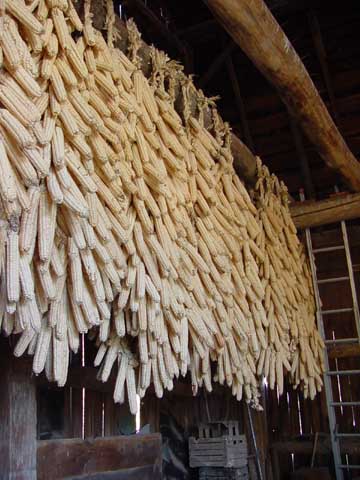Fall Harvest - Cornbraiding
Fall is a busy time. When the plants ripen, they must be harvested and stored so they can provide food for the whole winter. The land must also be prepared for next year's planting.
The ripened corn was hand-gathered. The stalks were allowed to remain standing until they would be the following season. The harvester would pluck the corn from the stalk and fling it over the shoulder where it would land in a gathering basket strapped to the back. Once the basket was full, it was emptied by bringing it up and over the head and tipping its contents into a larger pile of corn at one end of the field.
The next step was corn husking. In the old way, a person sat on the ground, legs straight out or with one knee slightly elevated. All of the husk leaves were removed except for four which were left on the cob for braiding. The removed husks and other parts were not discarded, but saved and used in many ways.
|
Corn braiders across the genders and generations:
Corn braiding was a method of preserving dried corn, that was a festive social event. It brought together members of the village who sat around huge piles of corn while they laughed and told stories as they braided corn. There usually was plenty of soup ready to be served.
Braided corn
|
The Tuscarora Environment News describes how corn is braided today
"Braiding the corn begins by clipping back most of the stalk to make it more pliable. Start by removing most of the husk until you have three individual husks on the cob. Most huskers will have two baskets near their feet, one used for ears of corn ready for braiding and another for cobs that can be used but not braided. Braiding corn is a technique often learned from an expert braider which requires time, patience, and strong hands. Always start with three ears of corn, twisting the cobs to bind the ears together. Weave one cob into the braid at a time. The braid is usually between five to seven feet long and holds a bushel of corn (25 kg). Once the Braids are complete, hang them in your storage area until it is ready to use. The braids should dry at least six weeks for corn soup and 3 months for corn bread. In addition to the corn, husks are collected by individuals to use in cornhusk dolls, rugs, baskets, or ceremonial masks. Every year, the farmer also quietly notes the best corn in the harvest for a seed source used the following season. Always remember that seed for white corn can not be bought in a store and it must be saved every year.
In fall, while corn was being preserved and braided the land also had to be prepared for the following Spring.
|
|





